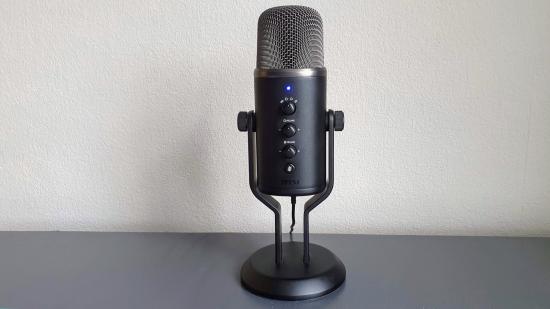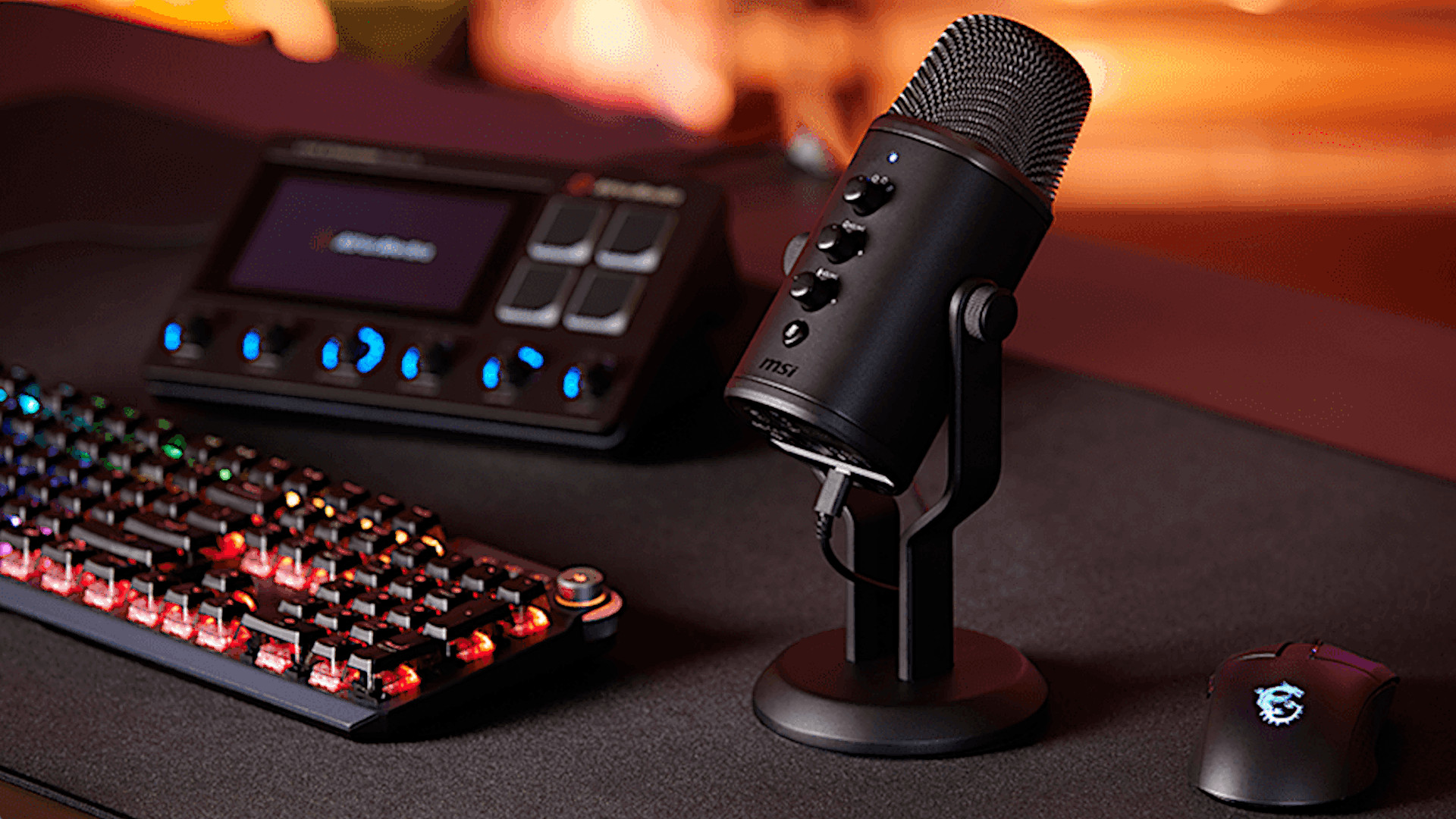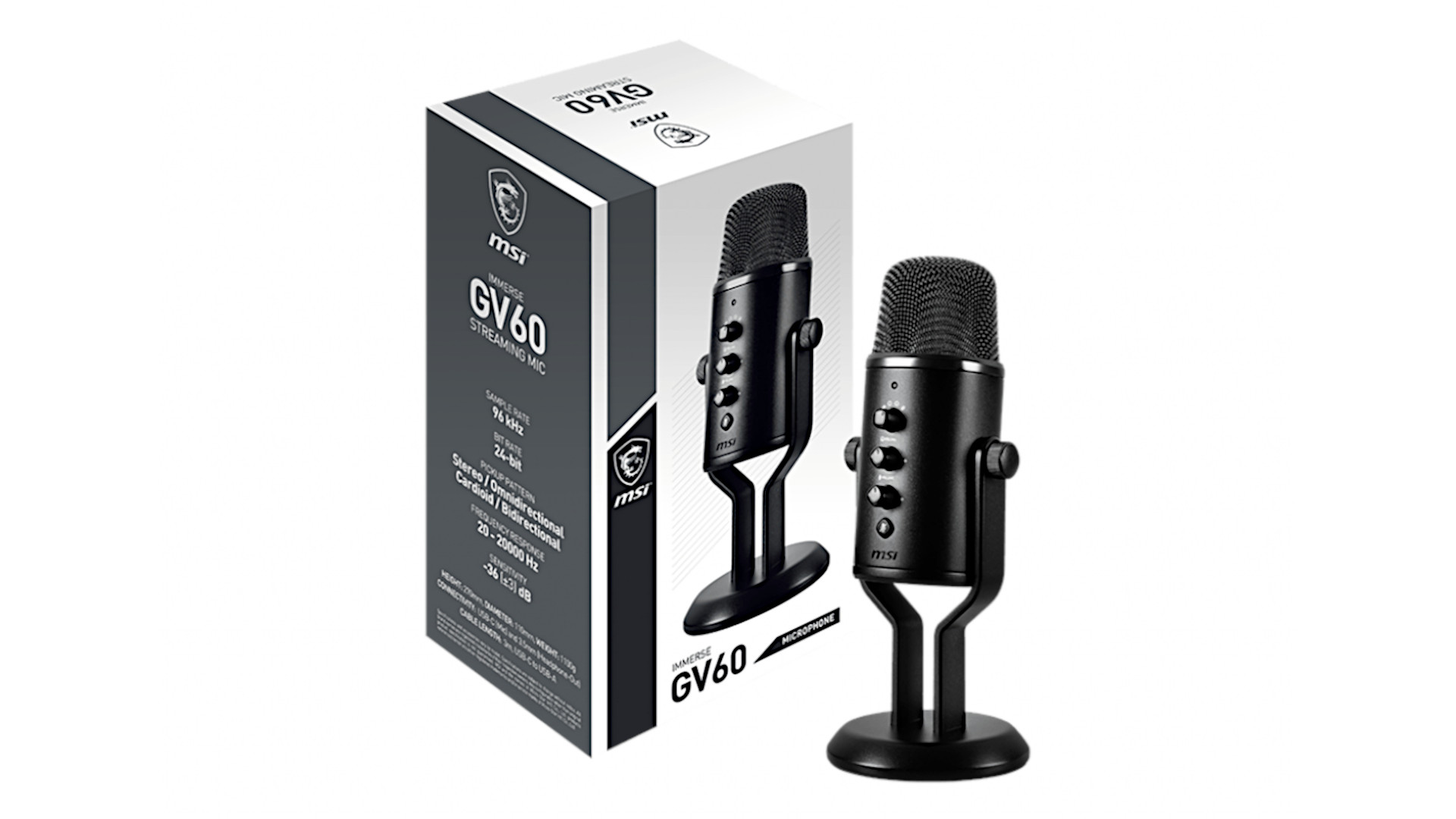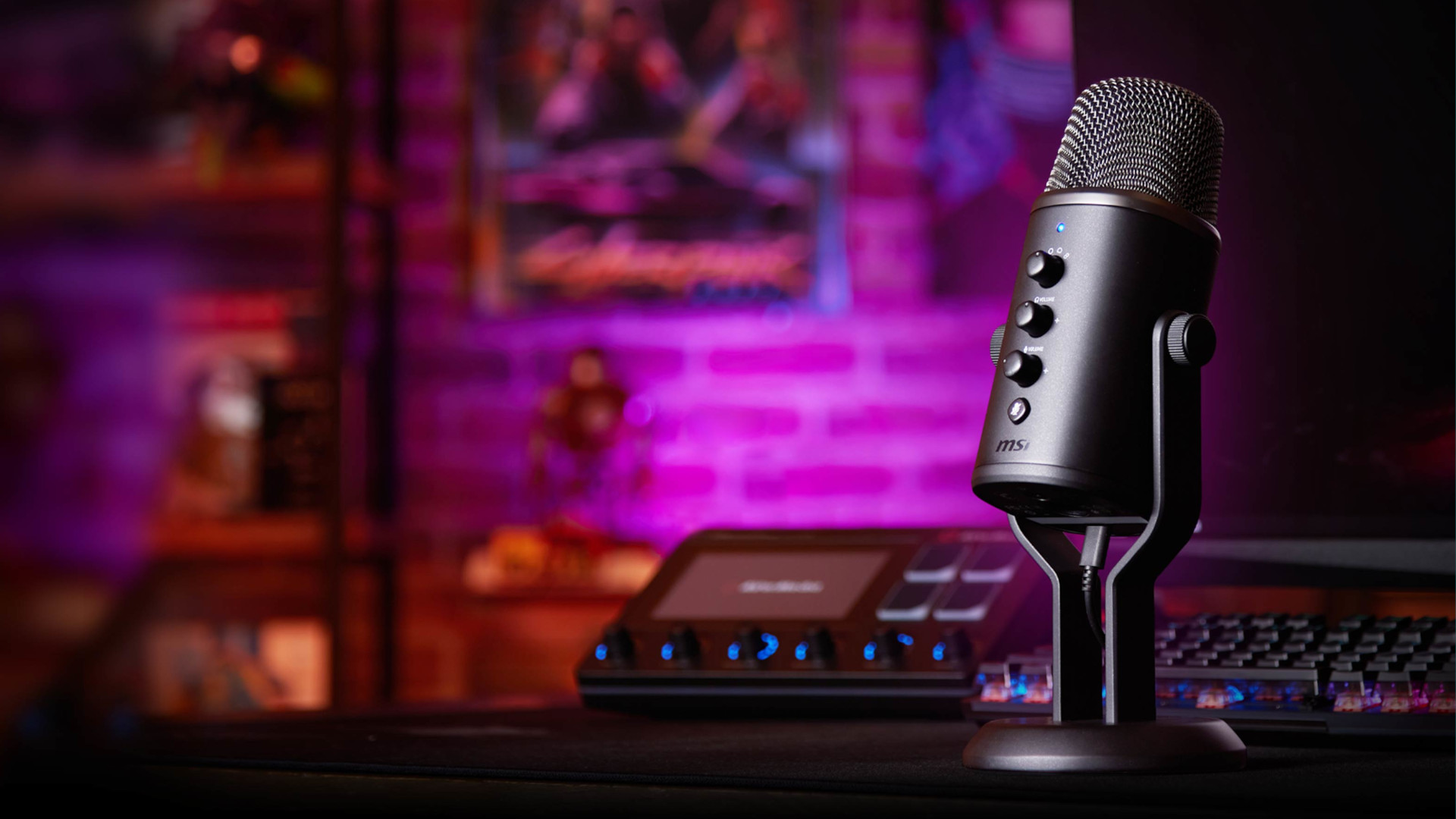Our Verdict
The MSI Immerse GV60 is a gaming microphone that offers great value, with crystal clear audio capture and high build quality, but it can't quite escape some of the teething issues that can come with first generation products
The MSI Immerse GV60 is the first desktop gaming microphone from MSI, with the company hoping to carve out a space in the audio capture market for itself against competitors like Blue and Elgato. The good news is that there’s a lot to love about this debut device, but it hasn’t quite escaped all the trappings that can come with first generation products.
Setting up the MSI Immerse GV60 is a breeze, as the microphone arrives preassembled in its stand. This means you only need to find a place for it on your gaming desk and plug in the included USB-C to USB-A cable into the bottom of the mic and your gaming PC. While the decision to use this inarguably more convenient connector type is partly down to the GV60 being a relatively new device, I’m glad MSI opted for it over something like USB Micro B which is found on the more expensive Blue Yeti X.
Looking at the MSI Immerse GV60, the phrase ‘sitting pretty’ springs to mind, regardless of whether you’ve plopped on the included foam pop filter or not. This is mostly down to it being made of metal rather than plastic, with the white labels for its three control dials contrasting nicely against its otherwise uniform matte black colour scheme.
Its metal construction also lends the MSI Immerse GV60 a degree of sturdiness, with its large circular base making up the majority of its hefty 1,100g (1.1kg) weight. The microphone is able to stand strong with nary a wobble in spite of me fervently tapping away on my gaming keyboard during an intense League of Legends team fights or while I’m writing this very review.
| Pros | Cons |
| 24/96kHz high resolution audio capture | Can’t disable real-time monitoring |
| No software required | May unmute itself without warning |
| Lower price than competition |
However, the design of the MSI Immerse GV60 isn’t entirely without fault. While I appreciate that all of its control dials extend nicely from its body, they can be quite uncomfortable to grip due to their rounded cuboid shape. This is admittedly a minor complaint, but I would’ve greatly preferred cylindrical knobs similar to the one found on the Elgato Wave:3 and just about every other desktop microphone.
Before I discuss the MSI Immerse GV60’s audio quality, I’ll briefly touch on a couple of things you should know if you’re thinking about mounting it on to a boom arm. The microphone should happily take to anything with built-in threading, but you’ll need to fork out for your own adapter if not, as you won’t find one included in the box. Additionally, you’ll want to make sure your particular boom arm is plenty strong to hold up the sizable weight of the GV60’s metal body.
The MSI Immerse GV60 is a wonderfully versatile gaming microphone on paper. For starters, its frequency response of 20Hz – 20kHz combined with its ability to capture high-resolution 24-bit 96KHz audio means that your voice will come through to your teammates or viewers with a wonderfully high level of fidelity.
Not only that, the ability to toggle between four pickup patterns further increases the value offered by the MSI Immerse GV60. These include: bidirectional, cardioid, omnidirectional, and stereo. If you’re unfamiliar with the term ‘pickup pattern’ or need a refresher, it essentially describes the direction(s) the microphone will record audio from.
While these options are nice to have, the majority of them are only useful outside a typical gaming PC or streaming setup, such as recording music or conference calls. As such, I recommend that most people switch the MSI Immerse GV60 to its cardioid pickup pattern and not look back, unless you want to introduce unwanted background sounds into your audio stream.
With this in mind, I can’t comment on how suitable the MSI Immerse GV60 is for those looking for an all-in-one solution to suit their streaming and musical aspirations, as my interests lie in finding a headset mic replacement. I will say, however, I didn’t notice any obvious issues when using any of the pickup patterns before settling on cardioid for the remainder of my testing.
Speaking plainly, the MSI Immerse GV60 offers noticeably superior audio quality over basically all the best gaming headsets I’ve ever used (as it should). When listening back to recordings via OBS or simply asking my friends how I sounded on Discord, the microphone is always able to capture my voice in a full, seemingly true to life fashion.
This comparison is only partly useful, however, as the MSI Immerse GV60 faces competition from microphones that I’ve highlighted previously and more, all of which deliver similar results when listening to samples of those devices. In fact, I find it hard to tell the difference between it and my Audio-Technica AT2020 when listening back to recordings.
So, how does the MSI Immerse GV60 differentiate itself from its competitors? Well, for one, you don’t need to install any drivers or software to achieve its high level of audio quality, meaning it will give you the same experience no matter what system you plug it into. However, there’s no optional program you can download to enhance or better cater the microphone to your particular needs either, like Logitech G Hub or Elgato Wave Link.
Some form of software, or perhaps another physical toggle on the MSI Immerse GV60, akin to its mute button, may have solved one of my biggest complaints with the microphone. The device supports real-time monitoring via a 3.5mm input, but there’s no way to turn it off should you want to. This is a shame, as the audio quality from this input is spotless in terms of EMI and other unwanted noise, making it a nice alternative to potentially problematic ports on PC cases.
There’s also a noteworthy gremlin I came across which makes me wish I could exert more control over the MSI Immerse GV60 via software, or that MSI could address via a driver or firmware update. When I receive a Windows system notification from an app, or load into a program that uses the microphone like Discord, the device occasionally unmutes itself. This will be understandably concerning for some, but the bottom line here is that no one should be expected to keep on top of something like this.
Despite these niggling issues, I must admit I’m thoroughly impressed with what MSI has managed to deliver with its first ever gaming microphone. Coming in at $129.99, the MSI Immerse GV60 offers audio quality akin to its more expensive competitors, with mostly superb build quality to boot.
It’s a fantastic value buy, providing you’re willing to put up with a few minor problems and feel comfortable forgoing any software control, making it one of the best gaming microphones you can buy today.



